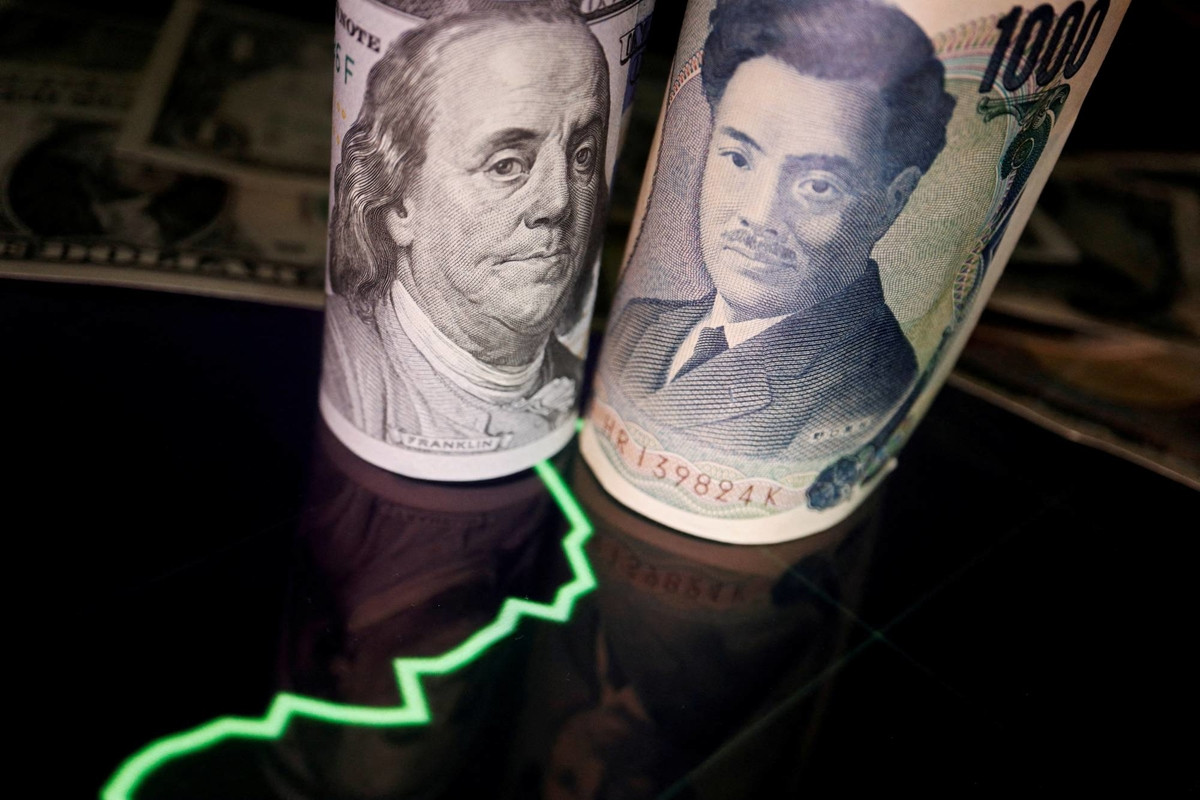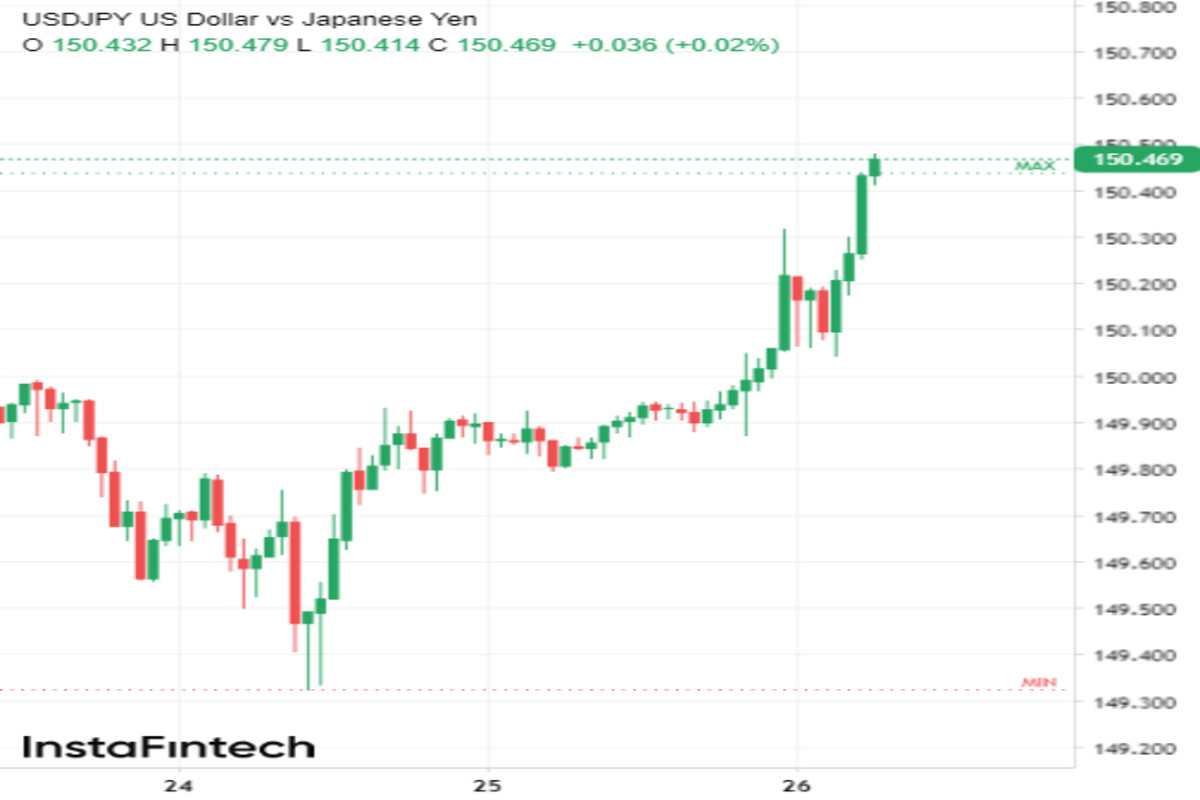
The USD/JPY pair finally broke through the 150 barrier, which had remained untouchable since early October. What is more, this morning, the currency pair surged to a new yearly high of 150.61, despite the increased risk of Japan's intervention. Let's find out what triggered this rally and how long it might last.
USD launched a rally
Despite market speculation that the Federal Reserve is nearing the end of its current tightening cycle, the US currency remains robust. Yesterday, the dollar index, which measures the US dollar against a basket of six other major currencies, rose by 0.3%, reaching a week-high of 106.5. The greenback's growth was fueled by several positive fundamental factors, but the rise in risk-averse sentiment was the primary driver. Last Wednesday, the Dow Jones index fell by 0.32% and the Nasdaq lost 2.43% due to weak corporate reports from top US companies.
Rodrigo Catril, a currency strategist at the National Australia Bank, said that markets once again showed signs of concern regarding decreasing corporate earnings in the US, contributing to the dollar's volatile ascent.
The escalating geopolitical tension is one more factor that encouraged buyers of the greenback, viewed as one of the best safe-haven assets. Investors are currently wary of the conflict escalation in the Middle East, especially after Israeli Prime Minister Benjamin Netanyahu mentioned preparations for a ground invasion into Gaza.
In addition, strong US macroeconomic statistics also boosted the dollar. Data released on Wednesday showed that September's US single-family new home sales sharply rose to a 19-month high of 759,000, significantly surpassing the forecast of 680,000. These positive figures, coupled with optimistic business activity data released earlier, increased the chances of a "soft landing" for the US economy, slightly raising the likelihood of further tightening in the US this year.
The main driver for USD/JPY:
A rise in hawkish expectations revived the growth in yields for 10-year US Treasury bonds, which reached a 16-year peak of 5.0% earlier this week. This provided strong support for the USD/JPY pair. The yen is highly sensitive to the rise in yields of 10-year US bonds since the Bank of Japan intentionally keeps its equivalent Japanese indicator close to zero. Now, traders are betting on a further rally in Treasury yields as more robust US macroeconomic data is anticipated.
The publication of the GDP data for the third quarter will be the main event on Thursday. Economists are forecasting stunning US economic growth from 2.1% to 4.2% during the period from July to September. If the forecast plays out, this could further fuel market expectations for an additional rate hike in the US.
In the event of this, both the yield of US government bonds and the dollar may jump. This can push the USD/JPY pair to new highs. Currently, the major currency pair is trading at a 30-year peak. Yesterday, it crossed the so-called "red line" of 150. Many traders believe that reaching this point might provoke currency intervention from Tokyo. This morning, the pair continued its upward movement.
risky.
What risks may traders face?
At the time of preparing this report, the US dollar had strengthened against the yen to 150.61. In response to the sharp weakening of the JPY, the Japanese government issued a warning to currency speculators. Early in the morning, Japan's Finance Minister Shinichi Suzuki cautioned investors against further selling off the yen. He stated that authorities are closely monitoring the situation. He warned that they were carefully watching currency movements. In the event of continued pressure on the yen, they would take all necessary measures.
Notably, Japanese officials previously indicated that the trigger for intervention might not be a specific level but rather the speed of the yen's decline. If the government deems the decline too rapid, they might intervene.
Despite the USD/JPY pair making a significant move yesterday, surpassing the key threshold of 150 and settling above it, its volatility reached its lowest level since December 2019 in just a week.
According to analyst Koji Fukaya, the relatively low fluctuations in the exchange rate are unlikely to deter Japan from intervening this time. The fact is that Japanese authorities have recently revised their definition of excessive speculative actions. Earlier this month, the finance minister stated that gradual, one-directional currency movements could be considered excessive.
Most of his colleagues also believe that a continued rise in the USD/JPY pair might prompt Tokyo to act soon. Therefore, going long on this instrument is now highly risky.
 English
English 
 Русский
Русский Bahasa Indonesia
Bahasa Indonesia Bahasa Malay
Bahasa Malay ไทย
ไทย Español
Español Deutsch
Deutsch Български
Български Français
Français Tiếng Việt
Tiếng Việt 中文
中文 বাংলা
বাংলা हिन्दी
हिन्दी Čeština
Čeština Українська
Українська Română
Română

